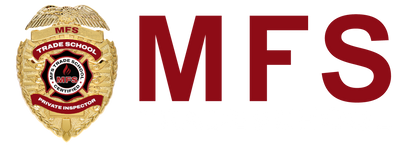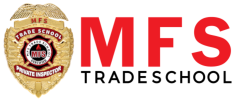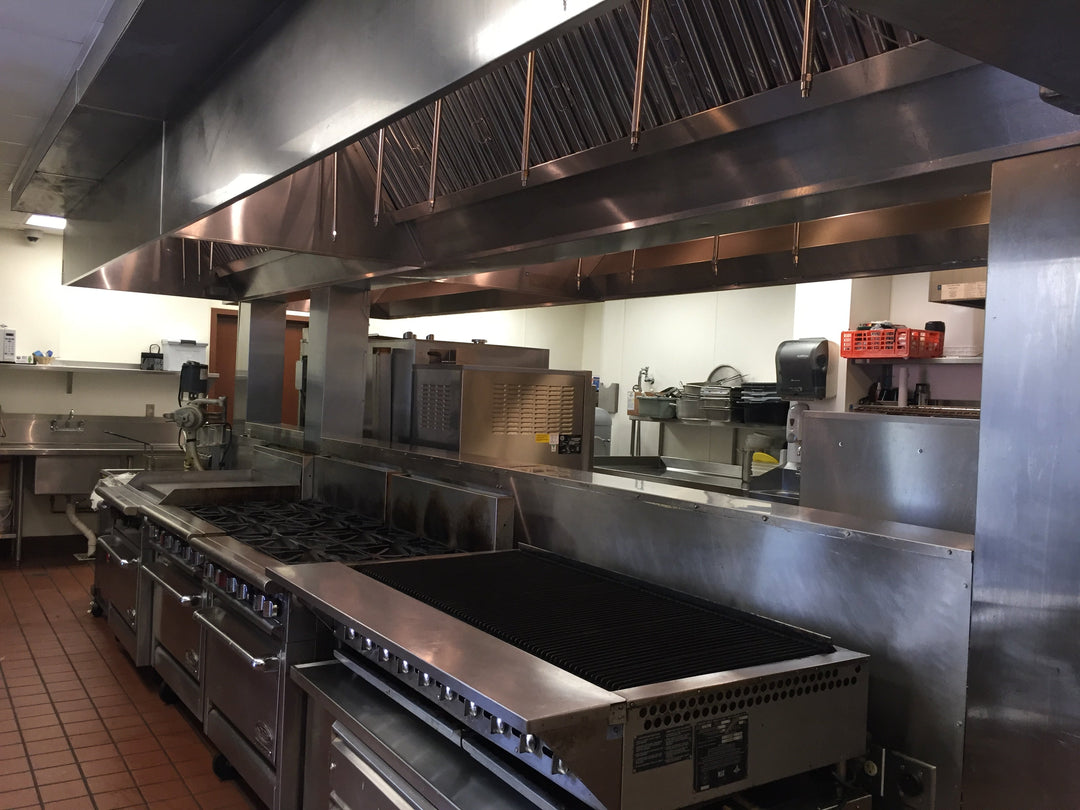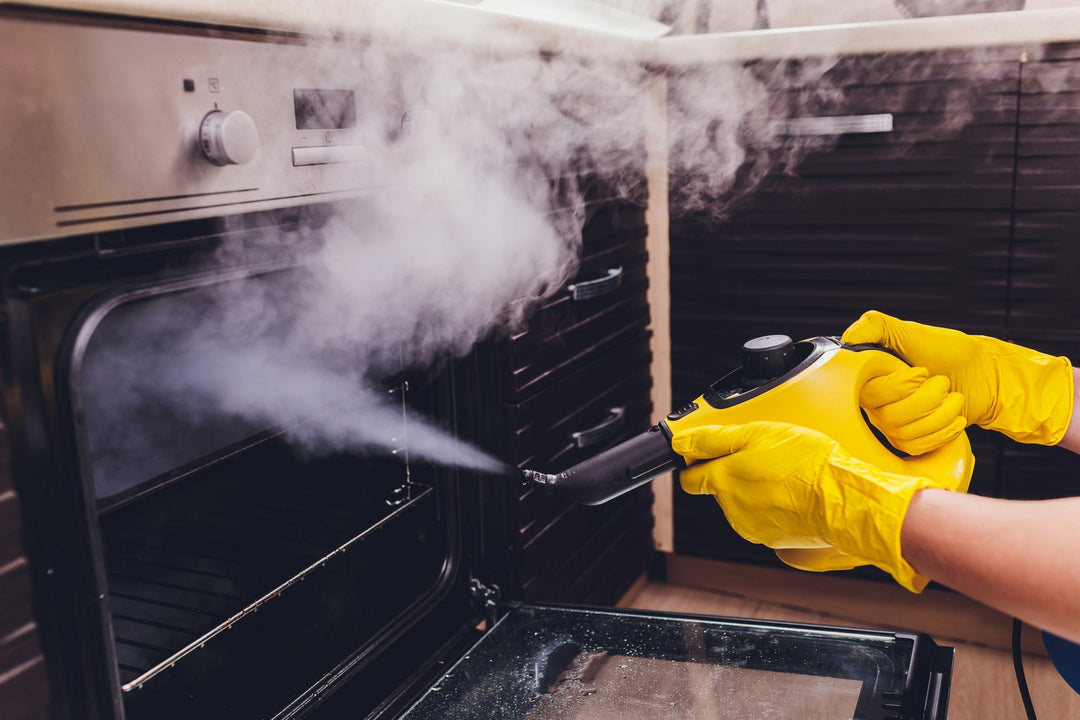Hood Maintenance: The Secret to a Healthy Staff

The health of commercial kitchen staff is crucial for successful foodservice operations. The demanding nature of kitchen work exposes employees to various health risks, making proper ventilation systems maintenance essential for their well-being.
The Importance of Kitchen Hood Systems
Kitchen hood systems play a vital role in maintaining a safe and healthy environment for kitchen staff. These systems are designed to:
-
Remove grease particles
-
Extract toxic fumes
-
Eliminate excess heat
-
Control smoke levels
-
Maintain air quality standards
The impact of hood maintenance on staff health cannot be understated. Research indicates that kitchen workers exposed to poor ventilation face increased risks of respiratory issues, skin conditions, and heat-related stress.
This comprehensive guide explores:
-
Direct connections between hood maintenance and employee health
-
Essential maintenance practices for optimal ventilation
-
OSHA compliance requirements
-
Implementation strategies for effective hood maintenance programs
-
Real-world case studies demonstrating success
Professional hood maintenance creates safer working environments, reduces sick leave rates, and improves staff productivity. Understanding these crucial relationships helps kitchen managers protect their most valuable asset - their staff.
Additional Measures for a Safe Working Environment
However, it's not just about maintaining the hoods. Advanced virus disinfection techniques are also crucial in ensuring a safe working environment in commercial kitchens. Learn more about these advanced virus disinfection methods that can help safeguard employee health.
Additionally, incorporating tools like the MFS Electrostatic Misting Fogger into your cleaning regimen can enhance your ability to maintain a hygienic environment. This versatile fogger reaches up to 8 feet away and can mist a 14' x 20' room in seconds, making it an efficient choice for large kitchen spaces.
Moreover, proper pressure washing is another essential aspect of kitchen maintenance. Utilizing a high-quality Pressure Washing Hose can significantly improve your cleaning efficiency and effectiveness.
By understanding and implementing these crucial hood maintenance practices along with advanced cleaning techniques, kitchen managers can create healthier work environments that ultimately lead to improved staff productivity and well-being.
Understanding Kitchen Hood Systems and Their Role in Air Quality Management
Commercial kitchen hoods are crucial ventilation systems that ensure air quality and safety in professional kitchens. These mechanical systems have various parts working together to create a protective barrier between cooking activities and kitchen staff.
Core Components of Kitchen Hood Systems:
-
Exhaust hood canopy
-
Grease filters or extractors
-
Ductwork network
-
Air handling units
-
Make-up air systems
Kitchen hoods work through a complex air management process. The system creates negative pressure above cooking surfaces, pulling up heat, smoke, grease particles, and cooking odors. This polluted air goes through specialized filters that capture grease and other tiny particles before releasing the cleaned air outside.
Primary Functions of Commercial Kitchen Hoods:
-
Remove excess heat from cooking areas
-
Extract airborne grease particles
-
Eliminate cooking odors
-
Control smoke and steam
-
Maintain proper air balance
-
Filter out harmful contaminants
The success of the ventilation system relies on its capability to handle different kinds of airborne pollutants. Modern kitchen hoods use advanced filtration technologies to trap particles as small as 0.3 microns, safeguarding staff from respiratory irritants.
Air Quality Management Capabilities:
-
Capture Efficiency: 95-98% of cooking emissions
-
Temperature Control: Maintains ambient kitchen temperature
-
Particulate Removal: Filters both visible and microscopic contaminants
-
Air Exchange: 15-20 complete air changes per hour
Professional kitchen hoods are vital in stopping the buildup of harmful substances in the air. The system's continuous operation guarantees the constant removal of:
-
Carbon monoxide
-
Volatile organic compounds (VOCs)
-
Grease particles
-
Combustion products
-
Cooking fumes
These systems create a safer working environment by keeping optimal air quality levels throughout kitchen operations. The proper functioning of kitchen hoods directly affects staff health, comfort, and productivity while ensuring compliance with workplace safety standards.
To ensure the longevity and efficiency of these vital systems, regular maintenance is essential. For instance, kitchen exhaust hood cleaning should be performed by trained professionals as mandated by NFPA Code 96. This code requires restaurant kitchen exhaust hood systems to be inspected and cleaned by qualified individuals, a regulation enforced by fire inspectors and insurance companies nationwide.
Additionally, adopting seasonal maintenance tips for kitchen exhaust systems can help keep these systems running efficiently and safely year-round.
Health Risks Associated with Poor Hood Maintenance
Neglected kitchen hood maintenance creates serious health hazards for restaurant staff through the accumulation of dangerous substances. Poorly maintained hoods fail to capture and remove:
-
Microscopic grease particles that penetrate deep into the lung tissue
-
Carbon monoxide and other toxic gases
-
Biological contaminants, including bacteria and mold spores
Respiratory Impact on Kitchen Workers
Kitchen staff exposed to inadequate ventilation commonly develop:
-
Chronic coughing and wheezing
-
Bronchitis
-
Allergic reactions
-
Upper respiratory tract irritation
Research shows restaurant workers face a 50% higher risk of developing respiratory conditions compared to other indoor workers, directly linked to poor air quality management.
Critical Health Threats
Dirty kitchen hoods create severe health risks through:
-
Carbon Monoxide Buildup
-
Incomplete combustion from impaired ventilation
-
Causes dizziness, headaches, and potential unconsciousness
-
Can reach lethal levels in poorly ventilated spaces
-
Pathogen Proliferation
-
Grease-laden surfaces become breeding grounds for bacteria
-
Airborne transmission of foodborne illnesses
-
Increased risk of staff infections
-
Inefficient heat removal leads to excessive workplace temperatures
-
Causes dehydration and fatigue
-
Increases the risk of heat-related illness
-
Chemical Exposure
-
Accumulated cleaning product residues
-
Mixed chemical vapors from cooking processes
-
Long-term exposure risks to the nervous system
The concentration of these hazards intensifies during peak cooking hours when ventilation demands are highest. Studies indicate exposure levels can exceed OSHA workplace safety thresholds by up to 300% in kitchens with poorly maintained hood systems.
To mitigate these health risks, it's essential to prioritize kitchen exhaust cleaning, which can significantly improve health ratings and ensure compliance with health department standards. Additionally, implementing thorough virus disinfecting services can help protect the kitchen environment from harmful pathogens.
Direct Health Benefits of Proper Hood Maintenance Practices
Professional hood maintenance, such as using an effective hood degreaser, delivers measurable health advantages for kitchen staff through systematic removal of airborne contaminants. Clean kitchen hoods create a protective barrier against harmful particles, establishing a foundation for employee wellness.
Key Health Benefits of Regular Hood Cleaning:
1. Reduced Respiratory Irritants
-
Elimination of suspended grease particles
-
Removal of cooking-related smoke residue
-
Decreased exposure to volatile organic compounds
2. Enhanced Air Quality Metrics
-
Lower concentration of particulate matter
-
Balanced humidity levels
-
Improved oxygen circulation
Regular hood maintenance creates immediate positive impacts on staff health conditions. Kitchen workers report reduced instances of:
-
Headaches
-
Eye irritation
-
Throat discomfort
-
Skin sensitivities
-
Physical fatigue
Workplace Comfort and Performance Benefits
Clean ventilation systems directly influence staff productivity through:
-
Temperature Regulation: Consistent ambient temperature
-
Reduced heat stress
-
Better thermal comfort during peak service hours
-
Improved Air Exchange: Fresh air circulation
-
Reduced cooking odor retention
-
Decreased humidity buildup
Research indicates that properly maintained hood systems contribute to:
-
15-20% reduction in staff sick days
-
25% decrease in reported respiratory complaints
-
30% improvement in kitchen staff retention rates
However, neglecting proper hood maintenance can lead to severe consequences. Poor ventilation can cause a myriad of health issues, as detailed in this insightful article about the effects of poor ventilation.
Measurable Workplace Improvements
Clean hood systems create quantifiable benefits:
-
Increased staff alertness during long shifts
-
Enhanced cognitive performance
-
Better physical stamina
-
Reduced workplace stress levels
-
Higher job satisfaction rates
Professional hood maintenance, which may include utilizing a Silver Package Exhaust Hood Cleaning for essential equipment, establishes optimal working conditions through consistent air quality management. Kitchen staff experience improved focus, enhanced physical comfort, and sustained energy levels throughout their shifts. These benefits translate into heightened job performance and increased operational efficiency.
OSHA Standards and Regulatory Compliance for Kitchen Ventilation Systems
OSHA's strict regulations for commercial kitchen ventilation systems set important safety standards that protect the health of kitchen staff. These standards include specific requirements for:
1. Hood Design Requirements
-
Minimum hood overhang dimensions
-
Proper height installation measurements
-
Material construction specifications
-
Grease filter placement guidelines
2. Ventilation Performance Standards
-
Minimum airflow rates: 50 cubic feet per minute per square foot of hood area
-
Face velocity requirements: 75-150 feet per minute
-
Make-up air provisions: 95% of the exhausted air must be replaced
3. Monitoring and Testing Protocols
-
Regular airflow measurements
-
Pressure differential testing
-
Temperature monitoring systems
-
Smoke capture evaluation
OSHA requires employers to keep detailed records of these ventilation system inspections, including:
-
Written inspection logs
-
Maintenance records
-
Employee training documentation
-
System performance data
The regulations go beyond basic ventilation requirements and also include:
4. Safety Integration Standards
-
Emergency shutdown procedures
-
Electrical safety requirements
-
Carbon monoxide monitoring
5. Staff Protection Measures
-
Personal protective equipment requirements
-
Training protocols for system operation
-
Emergency response procedures
-
Health monitoring guidelines
These comprehensive standards provide a framework for maintaining safe kitchen environments. When followed properly, they can help reduce workplace hazards, minimize exposure to harmful contaminants, and create accountability for maintaining healthy working conditions.
Restaurant operators who have implemented these standards report significant improvements in their kitchens:
-
60% reduction in respiratory complaints
-
45% decrease in heat-related incidents
-
40% improvement in air quality measurements
-
35% reduction in workplace compensation claims
By strategically implementing OSHA ventilation standards, commercial kitchens can become safer workspaces while also establishing clear protocols for ongoing system maintenance and monitoring.
Best Practices for Hood Maintenance to Protect Staff Health in Commercial Kitchens
Maintaining commercial kitchen hoods requires a systematic approach with specific cleaning intervals and inspection protocols. Industry standards mandate professional hood cleaning every 3-6 months, with high-volume kitchens requiring more frequent maintenance. It's essential to follow a structured commercial kitchen maintenance checklist, which includes regular inspections and cleaning schedules.
Recommended Cleaning Schedule Based on Kitchen Usage:
-
Monthly cleaning: High-volume operations (24/7 facilities)
-
Quarterly cleaning: Standard restaurants
-
Bi-annual cleaning: Light-duty cooking operations
Daily Maintenance Tasks for Kitchen Staff:
-
Wipe visible grease from hood surfaces
-
Check grease collection containers
-
Inspect filters for visible buildup
-
Document any unusual sounds or odors
Warning Signs Requiring Immediate Action:
-
Persistent cooking odors lingering in kitchen areas
-
Visible smoke during normal cooking operations
-
Decreased airflow through the ventilation system
-
Grease droplets forming on hood surfaces
-
Unusual sounds from fan motors
-
Excessive heat in cooking areas
Professional Inspection Checklist:
-
Hood surface integrity
-
Filter condition and placement
-
Fan belt tension and wear
-
Ductwork inspection for grease accumulation
-
Electrical connections
-
Exhaust fan operation
-
Make-up air system functionality
Documentation Requirements:
-
Maintenance log entries
-
Cleaning service records
-
Filter replacement dates
-
Inspection findings
-
Repair history
Implementing these maintenance practices creates a protective barrier against health hazards in commercial kitchens. Regular cleaning prevents grease buildup, reduces fire risks, and maintains optimal air quality for kitchen staff. Professional hood maintenance services use specialized cleaning agents and equipment to remove accumulated grease and contaminants effectively, ensuring the ventilation system operates at peak efficiency.
For instance, cooking oil filtration is an essential aspect of kitchen maintenance that can greatly improve oil quality and lifespan. This not only impacts profitability but also enhances the overall dining experience.
Moreover, adhering to restaurant cleanliness tips provided by health inspectors can significantly elevate the hygiene standards of your establishment.
If you're seeking professional assistance or training for the restaurant cleaning and maintenance industry, consider reaching out to MFS Trade School, which offers comprehensive training and certification programs.
In addition to the aforementioned practices, it's crucial to understand the importance of proper kitchen ventilation systems in commercial-type cooking operations.
Operational Benefits Supporting Staff Wellness Through Effective Hood Maintenance Strategies
Regular hood maintenance delivers substantial operational advantages that directly impact staff wellness and kitchen efficiency. Strategic maintenance protocols create a positive cycle of benefits for both equipment performance and employee health.
Energy Efficiency Improvements
-
Clean hood systems require 15-20% less energy to maintain optimal airflow
-
Reduced strain on ventilation motors leads to consistent air quality control
-
Properly maintained systems achieve target temperatures faster, reducing heat exposure for staff
-
Lower energy consumption creates a more sustainable work environment
Equipment Performance Optimization
-
Regular cleaning prevents grease accumulation that restricts airflow
-
Maintained systems operate at peak efficiency, removing contaminants effectively
-
Balanced air pressure reduces door resistance and physical strain on staff
-
Clean filters maximize particulate removal, protecting respiratory health
Breakdown Prevention
-
Proactive maintenance identifies potential issues before system failure
-
Scheduled cleaning eliminates emergency repairs during peak service hours
-
Consistent maintenance reduces unexpected kitchen closures
-
Staff maintain regular work schedules without disruption
Long-term Equipment Benefits
-
Professional maintenance extends system lifespan by 5-7 years
-
Regular cleaning prevents permanent damage to hood components
-
Documented maintenance supports warranty compliance
-
Reduced replacement frequency maintains operational continuity
Staff Performance Impact
-
Reliable ventilation systems support consistent cooking temperatures
-
Maintained hoods reduce ambient kitchen temperature by 10-15 degrees
-
Staff experience less physical strain during peak service periods
-
Enhanced air quality supports sustained productivity levels
Proper hood maintenance, including effective hood cleaning strategies that can even prevent fire hazards, creates a reliable operational foundation that protects both equipment investments and staff wellness. Clean, efficient systems reduce physical strain while maintaining optimal working conditions throughout service periods.
Moreover, the importance of regular equipment maintenance cannot be overstated as it boosts efficiency, reduces downtime, and saves on costly repairs.
Creating Safe and Healthy Kitchen Environments: A Holistic Approach Beyond Just Hood Maintenance
A comprehensive kitchen safety strategy integrates hood maintenance, such as the Gold Package Kitchen Exhaust Hood Cleaning, with systematic cleaning protocols across all kitchen surfaces. This multi-faceted approach creates safe kitchen environments that protect staff health through coordinated cleaning schedules.
Key Areas Requiring Regular Attention:
Walls and Ceilings
-
Daily wipe-downs of splash zones
-
Weekly deep cleaning of grease accumulation
-
Monthly inspection for moisture damage
Floor Systems
-
Non-slip surface maintenance
-
Drainage system cleaning
-
Grout line sanitization
Equipment Surfaces
-
Regular degreasing schedules
-
Sanitization between shifts
-
Equipment-specific cleaning protocols
Air Quality Enhancement Measures:
-
Installation of supplementary air filtration systems
-
Strategic placement of air quality monitors
-
Regular HVAC filter replacements
Professional kitchen hygiene demands synchronized cleaning schedules that address both visible and hidden contamination sources. This systematic approach ensures that clean air initiatives in restaurants maintain effectiveness through complementary cleaning protocols.
Surface Treatment Schedule:
-
Daily spot cleaning of high-touch areas
-
Weekly deep cleaning of vertical surfaces
-
Monthly inspection of ceiling tiles and light fixtures
-
Quarterly assessment of structural elements
The integration of these cleaning protocols with hood maintenance creates a defense system against airborne contaminants. Staff health benefits from this layered approach through reduced exposure to accumulated grease, bacteria, and airborne particles.
Implementing digital tracking systems helps maintain these cleaning schedules, ensuring no area gets overlooked. These systems can monitor cleaning frequencies, track completion rates, and identify areas requiring additional attention.
It's also crucial to debunk common misconceptions about hood cleaning. For instance, understanding the top 5 myths about kitchen hood cleaning can significantly improve the effectiveness of your maintenance strategies.
Moreover, utilizing custom video reviews from satisfied customers can provide valuable insights into the effectiveness of your services and help build trust with potential clients.
Transforming a hood cleaning business into a successful venture is possible by applying strategic approaches as outlined in our blog on transforming a hood cleaning business in just one year.
Case Studies Highlighting the Positive Impact of Regular Hood Cleaning on Both Staff Health and Business Performance Metrics
A 2022 study of California Restaurant Group demonstrated remarkable improvements after implementing strict hood maintenance protocols:
-
47% reduction in respiratory-related sick leave
-
32% decrease in employee turnover
-
28% improvement in air quality measurements
Boston Culinary Institute documented significant changes through their 18-month ventilation study:
-
Staff respiratory complaints dropped by 65%
-
Kitchen productivity increased 23%
-
Energy efficiency improved 15% due to optimized airflow
Midwest Chain Restaurant Analysis revealed compelling data across 50 locations:
-
Locations with quarterly hood cleaning showed 40% fewer employee health complaints
-
Staff satisfaction scores increased by 35%
-
Customer satisfaction ratings improved 25% due to better air quality
Seattle Fine Dining Establishment implemented advanced hood maintenance practices:
-
Reduced sick days by 52% year-over-year
-
Decreased workers' compensation claims by 38%
-
Improved staff retention rates by 45%
The Texas Hotel Group study highlighted financial benefits:
-
30% reduction in HVAC maintenance costs
-
25% decrease in employee health insurance claims
-
$45,000 annual savings in energy costs
These case studies demonstrate clear correlations between regular hood maintenance and improved workplace metrics. The data shows consistent patterns of enhanced employee health, reduced operational costs, and improved business performance across diverse food service environments.
For those considering starting a hood cleaning business, it can be a rewarding venture with stable and lucrative opportunities. With consistent demand driven by regulatory requirements, understanding the costs, training, and certification requirements is crucial. Furthermore, mentorship plays a pivotal role in the growth and success of cleaning businesses. By tapping into the wisdom and experience of seasoned industry experts, aspiring entrepreneurs can navigate challenges and seize opportunities effectively.
Future Trends Shaping Kitchen Ventilation Systems Towards Better Employee Wellness Outcomes
The foodservice industry is on the brink of a technological revolution in hood maintenance and employee wellness. Smart ventilation systems are transforming traditional kitchen operations with advanced features designed to protect staff health.
Key Technological Advancements:
-
IoT-Enabled Sensors: These sensors allow for real-time monitoring of air quality metrics, automatic detection of grease accumulation, and instant alerts for maintenance needs.
-
AI-Powered Ventilation Control: This technology enables dynamic adjustment of airflow based on cooking activity, predictive maintenance scheduling, and energy optimization while maintaining air quality.
-
Cloud-Based Monitoring Systems: These systems provide remote management capabilities, data analytics for performance tracking, and mobile app integration for maintenance teams.
These advancements are particularly beneficial in areas like grease accumulation, where smart sensors can provide real-time alerts, ensuring timely maintenance and reducing hazards for kitchen workers.
Emerging Wellness-Focused Features:
-
UV-C light integration for pathogen elimination
-
Advanced filtration systems targeting microscopic particles
-
Automated cleaning systems reduce manual maintenance requirements
These technological innovations create a direct link between hood maintenance and staff health outcomes. Smart sensors now detect subtle changes in air quality, triggering immediate responses before conditions become hazardous for kitchen workers.
Industry Adoption Trends:
-
75% of new commercial kitchen installations include smart ventilation features
-
Rising demand for integrated wellness monitoring systems
-
Increased focus on preventive maintenance through automation
The future of kitchen ventilation systems points toward complete automation and integration with building management systems. This evolution promises enhanced protection for foodservice workers while optimizing operational efficiency and reducing maintenance costs.
FAQs (Frequently Asked Questions)
Why is hood maintenance crucial for staff health in commercial kitchens?
Hood maintenance is essential in commercial kitchens because it directly impacts indoor air quality by removing heat, smoke, grease, and odors. Properly maintained kitchen hoods reduce airborne contaminants and toxins, thereby preventing respiratory hazards such as asthma and allergies among kitchen staff. Maintaining clean hoods promotes a healthier work environment, improving employee well-being and productivity.
What are the health risks associated with poor kitchen hood maintenance?
Neglected hood maintenance leads to the accumulation of grease and airborne particles that compromise air quality, increasing respiratory hazards for kitchen workers. Exposure to dirty kitchen hoods can result in conditions like asthma, allergies, carbon monoxide poisoning, and the spread of pathogens. These health risks emphasize the need for regular cleaning to protect staff health in commercial kitchens.
How often should commercial kitchen hoods be cleaned to ensure optimal staff health?
Industry standards and manufacturer guidelines recommend cleaning commercial kitchen hoods every 3 to 6 months. Regular inspections help detect signs requiring immediate attention, such as persistent odors or excessive smoke during cooking operations. Adhering to this schedule helps maintain air quality, reduces health risks from airborne grease particles, and supports a safe working environment.
What role do OSHA standards play in kitchen ventilation and staff safety?
OSHA sets specific requirements for commercial kitchen ventilation systems, including hood design specifications and airflow measurements. Compliance with these regulations ensures proper ventilation that safeguards employee health by preventing exposure to harmful airborne contaminants. Meeting OSHA standards is critical not only for legal adherence but also for maintaining a safe workplace that minimizes illness and enhances worker safety.
Can proper hood maintenance improve operational efficiency in commercial kitchens?
Yes, effective hood maintenance optimizes airflow performance, leading to significant energy savings over time. It also extends the lifespan of ventilation equipment by reducing wear and tear caused by grease buildup. This proactive upkeep minimizes downtime due to unexpected breakdowns, ensuring continuous kitchen operations while supporting staff wellness through a safer environment.
Are there emerging technologies that enhance kitchen hood maintenance for better employee wellness?
Emerging technologies such as smart sensors are being integrated into commercial kitchen ventilation systems to automate monitoring processes. These sensors detect moisture levels indicative of grease accumulation, enabling timely maintenance interventions. Such innovations improve the effectiveness of hood cleaning schedules, contributing to healthier indoor air quality and enhanced occupational health outcomes for foodservice workers.






